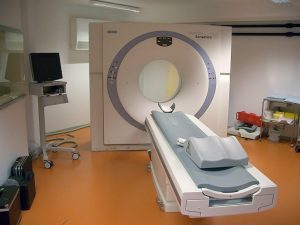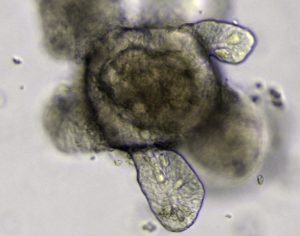Most people generally value their health higher than the protection of other living beings. The suffering that animals experience in animal experiments that are sometimes meaningless could, however, be avoided to a large extent since there are modern alternatives nowadays. These animal testing-free methods are not only more ethically justifiable, they are often faster and more cost-effective, and in some areas they deliver at least as meaningful results.
Microdosing
For example, so-called microdosing has been carried out for drug research for several years. Instead of using animals for tests, volunteers are given an extremely small dose of a potential drug, around one hundredth of the assumed therapeutically effective dose.
The body’s reactions to the active ingredient are then examined in the test subjects’ blood and urine samples using highly sensitive methods such as accelerator mass spectrometry (AMS). For example, researchers observe whether the substance is metabolized into toxic breakdown products, whether it reaches the organ and works there, or whether it accumulates and is not excreted or excreted too early.
Microdosing thus only covers pharmacokinetics, i.e. the distribution and metabolism of the drug in the body. Other animal-free methods must be used to check the safety and effectiveness of a new active ingredient.
Cells from the test tube
Another very widespread method that does not involve animal experiments is to cultivate human cells and tissues in vitro in a nutrient medium. The cells for this are obtained from the removed tissue during operations, for example. They can be kept alive in incubators in increased numbers and sometimes for years.
With the cell cultures, scientists can, for example, observe through a microscope how human skin cells react to a certain substance and how they change. They can also investigate, for example, why a change in a certain gene turns a healthy cell into a cancer cell. The reaction of our cells to an infection with the coronavirus and the conversion of the infected cells into virus factories for SARS-CoV-2 is also examined with such cultures. In-vitro neurotoxins can also be researched with cultures from nerve cells.
The so-called monocyte activation test (MAT) can be used to detect fever-causing substances in drugs. To do this, researchers put the drug in a container with human blood cells and after a certain time measure the immune cells circulating in the blood, the monocytes, in order to assess the immune response.
Organs produced artificially
Another possibility are three-dimensional growing cell cultures with which even complex tissue structures can be reproduced. For example, researchers have already succeeded in growing a kidney precursor directly from induced stem cells.
Functioning muscle fibers have also been grown from human muscle cells in the laboratory. Like naturally grown muscles, they react to electrical stimuli and medicinal substances and could therefore be used, for example, for testing new drugs and as a model for rare diseases. And the skin with its various layers could already be artificially produced “in the Petri dish”.
In addition, it has already been possible to create so-called “mini brains”, millimeter-sized, three-dimensional brains made from human cells. They already have many anatomical and functional properties of the entire organ, as they consist of several connected layers of different cell types. Depending on their structure, properties and manufacture, there are different types of brain organoids that can be used to research different brain regions.
These in-vitro models have the advantage that they not only do without animal experiments, but also enable personalized medicine. For example, a sample of tumor cells can be taken from cancer patients, cultured and then grown into an individual tumor organoid. Researchers can then use it to test therapy options and choose the most effective drugs.
Almost anything is possible
In addition, scientists can use human cells to create three-dimensional organs in a 3D printer. For example, artificial ovaries or a complete heart. And skin tissue could also be printed. This enables researchers to reliably test skin irritation caused by active ingredients or chemicals or, for example, to transplant suitable skin onto burned parts of the body using cells from a patient.
Researchers go even further with so-called multi-organ chips: Several organoids from human cells are connected to one another on a biochip via a microchannel system made of glass tubes. The channels can be used to mimic blood circulation and metabolism, among other things, so that entire organ systems are created in miniature form on the chip. However, this replica of the human being has neither awareness nor empathy.
Digital research
In addition to cell cultures, scientists can also use special computer systems such as the “Quantitative Structure Activity Relationship” to calculate their likely effect on the basis of the molecular structure of a substance, analyze diseases and search for active substances.

In addition, prospective doctors can also simulate operations using real-time computer simulations. The surgeon sees images of a real operation on a human patient while he is working with the instruments. He can see if he cuts too deeply into the tissue, for example, because the amount of blood is then animated and even uses haptic perception to feel when he hits tissue with the instruments or moves the forceps.
Animal experiments can also be dispensed with with the help of imaging methods such as magnetic resonance imaging (MRT) and computed tomography (CT). For example, researchers can use it to research the brain directly on humans or to observe which brain regions are active in certain behaviors.
–

